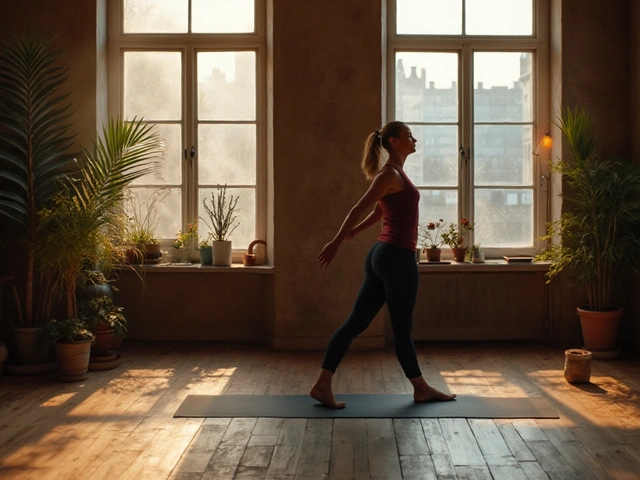Stretching Benefits: Improve Mobility, Reduce Pain, Boost Recovery
Want to move easier, feel less ache, and get more out of massage or workouts? Stretching delivers that fast. It increases joint range, eases tight muscles, and helps blood flow where your body needs it. You don’t need long sessions—small, focused stretches worn into your day make a big difference.
How stretching helps your body
Stretching loosens tight tissue so joints move with less resistance. That reduces nagging pain from stiffness and helps posture—useful if you sit a lot. It also improves circulation, which speeds recovery after deep work like Hellerwork, Feldenkrais training, or intense workouts. Better blood flow brings oxygen and nutrients that help muscles repair and relax faster.
Stretching trains movement patterns, too. Gentle routines teach your nervous system how to use muscles without over-gripping. That matters if you try therapies such as Ortho-Bionomy or Rolfing, where coordinated movement and release help long-term change. Stretching primes the body so those sessions work deeper and last longer.
Simple, effective stretches you can do now
Neck turns: sit tall, drop ear to shoulder and hold 20–30 seconds each side. You’ll cut neck tension that often travels into shoulders and upper back.
Hamstring reach: sit with one leg straight, reach toward toes with a soft bend in your chest. Hold 20–40 seconds. Tight hamstrings pull on your lower back and reduce movement, so this helps both flexibility and pain.
Hip opener: lie on your back, cross one ankle over the opposite knee and gently pull the straight leg toward your chest. Hold 30 seconds. This eases sitting-related tightness and helps hips feel less stiff when you walk or squat.
Shoulder doorway stretch: place forearm on a doorframe and turn your torso away until you feel a stretch across your chest. Hold 20–30 seconds. This counters rounding from desk work and complements massage approaches like Amma or Lomi Lomi that target the chest and shoulders.
Do stretches slowly and breathe. Hold steady rather than bounce. Aim for 3–4 times a week at minimum; daily short sessions give the best results. Add a quick 5–10 minute routine after a warm shower or at the end of a massage to lock in gains.
Safety tips: if a stretch causes sharp pain, stop. Work within a gentle discomfort zone and progress gradually. If you have a recent injury, serious joint issues, or conditions like scoliosis, ask a therapist first—some approaches such as Rolfing or specialized Feldenkrais lessons can tailor safe options for you.
Want to pair stretching with hands-on care? Check out pieces on trigger point and palliative massage to learn how targeted touch and simple stretches reduce pain. For a fuller movement reset, Feldenkrais and Hellerwork articles explain how movement lessons extend stretching benefits into everyday life.
Stretching isn’t fancy. It’s practical, quick, and huge for daily comfort. Start small, be consistent, and use stretches to support the bodywork or massages you already love. Your joints and muscles will thank you.

Enhancing Your Pilates Practice with Effective Fascia Stretching Techniques
Hey there! If you're like me, always hunting for new ways to power up our Pilates sessions, you'll dig this. We're diving into how stretching our fascia – yeah, that's the connective tissue jazz – can seriously crank up our Pilates game. Think about it; supple fascia equals smoother moves and more oomph in our workouts. I'm gonna break it down for you, sharing personal experiences and some ace moves to get that fascia flexing. Whether you’re a newbie or a seasoned pro, join me as we explore this little trick to making our routines more dynamic and propel our Pilates to the next level!
Categories
- Health and Wellness (148)
- Alternative Therapies (86)
- Massage Therapy (40)
- Travel and Culture (15)
- Beauty and Skincare (9)
- Holistic Health (8)
- Health and Fitness (5)
- Spirituality (5)
- Other (2)
- Personal Development (2)



